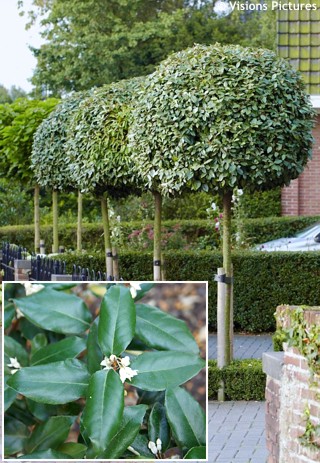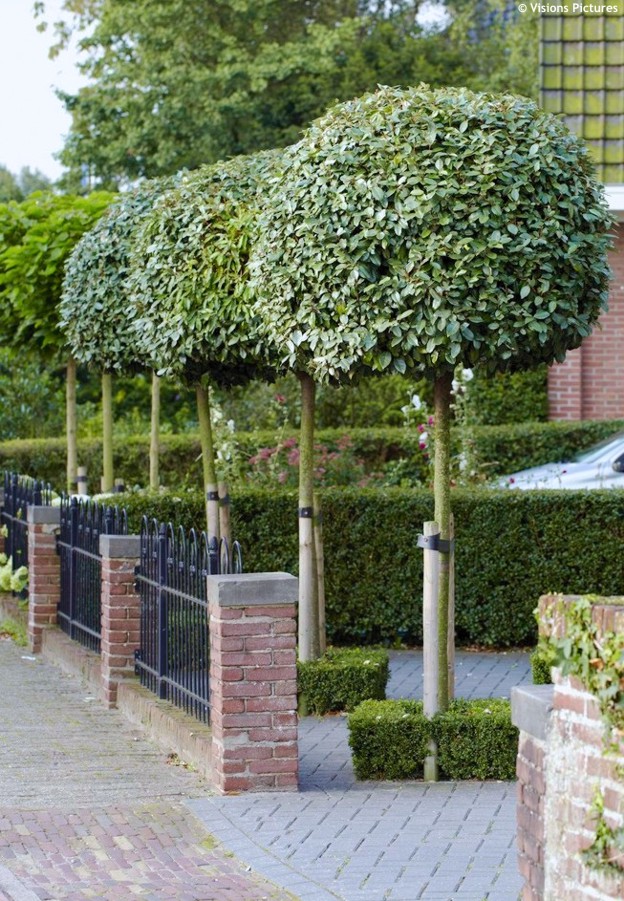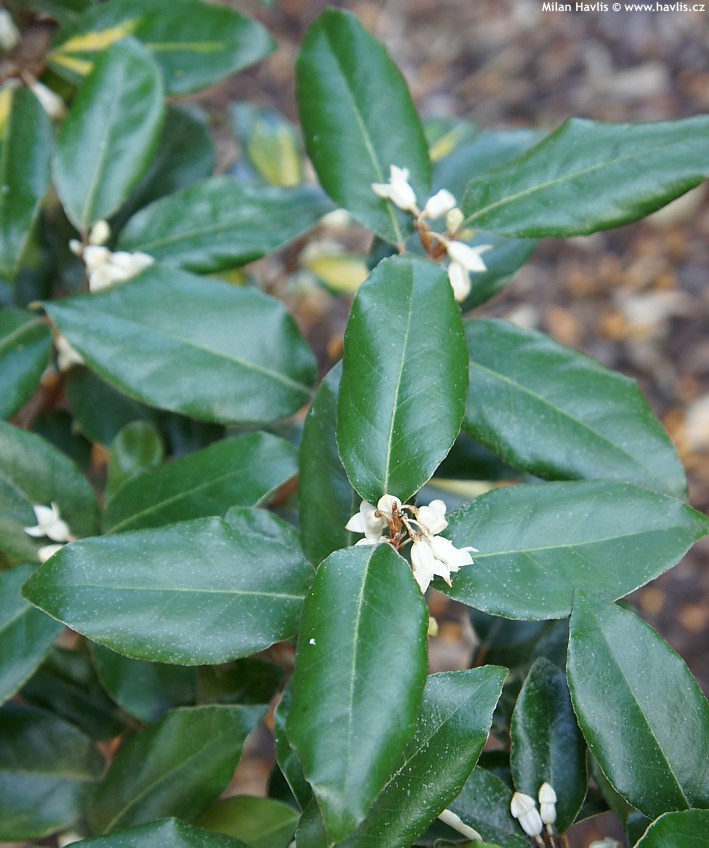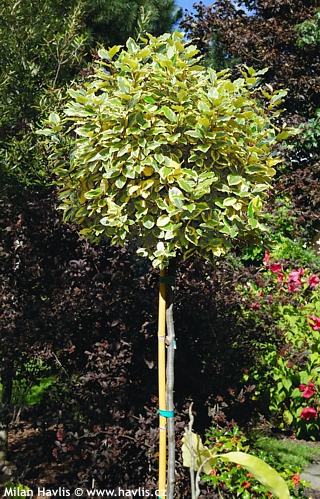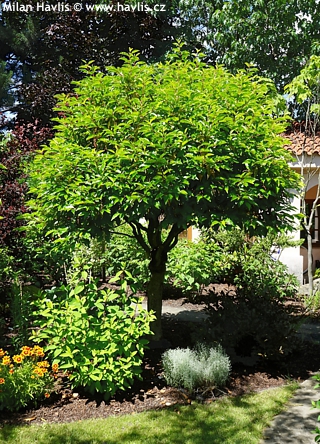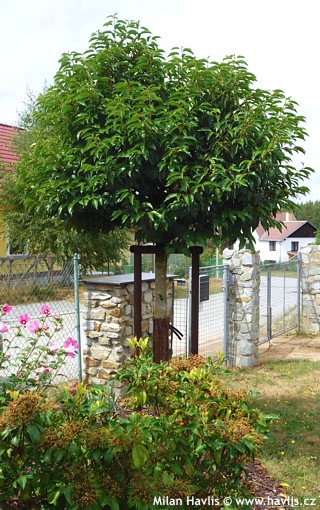Elaeagnus x ebbingei evergreen silverthorn - STANDARD TREE
Evergreen silverthorn is a natural hybrid of e. macrophylla with large, evergreen, rather rounded leaves and vigorously growing e. pungens with narrower foliage and thorns. It is sometimes called Russian olive which is not correct as this name is already used for its deciduous sister e. angustifolia. It is described to have been discovered by a Dutch horticulturist Simon Doorenbos (1891-1980) who named it after another Dutch botanist J.W.E. Ebbinge in 1929. However, many years later it was pointed out that a Swiss botanist Camille Servettaz (1870-1947) found this mutation, too, and named it elaeagnus x submacrophylla already in 1909. In spite of that, the whole horticultural world still sticks to e. x ebbingei and we do, too, if you don’t mind.
Its leathery leaves emerge beige-grey and mature to glossy dark green with lots of grey dots making it look like stardusted. Thanks to the foliage it is sometimes called Russian olive which is not correct as this name is already used for its deciduous sister elaeagnus angustifolia.
From late summer through autumn appears a profusion of tiny, urn-shaped, creamy-beige flowers which are not easy to see at a glance but are easy to recognize from a distance because of their lovely, sweet fragrance, especially from the afternoon till the evening. They are followed by edible fruit in April or May. About 1.5cm long, oval drupes are deep red and taste like sweet version of sour cherries. You can tell they have ripened when they begin to fall. The plant can produce fruit only after mild winters.
Evergreen silverthorn is demanded as a standard tree which offers an instant and evergreen screening that blocks the unwanted views from neighbouring windows. It also serves as a handsome small evergreen tree if regularly trimmed since it grows very fast. Pruning and shaping can be done it in almost any manner and at any time from early spring until late summer.
It is soil adaptable, just avoid heavy clay and boggy or easily waterlogged situations. Mulching is necessary in our climate to protect the surface roots from heavy frost. It is hardy to about -25°C (USDA zone 6) but as a standard tree it is not suitable for the coldest locations of zone 6 with long-lasting frosts. Provide a good support for several years after transplanting i.e. at least 3-4 years before the trunk becomes strong enough to hold the canopy weight without bending.
Last update 23-01-2019

9 775 Kč
Goods are shipped all over Europe. For Russia and U.K. and for further details please read about SHIPPING OPTIONS HERE.
Are you interested in a serious discount for orders NOV-FEB? Check your options here.
THE PRICES INCLUDE VAT of 15%. For quick conversion you can use 1 CZK = approx. 0.04 EUR
- STANDARD QUALITY - Plants of this group are 1st class quality with number of branches and overall density adequate to their size and age, considering they were container grown.
- DE LUXE QUALITY - This label guarantees a luxurious quality of manually selected plants that, compared to their height and age, are exceptionally dense and beautiful.
- EXTRA - These plants are usually mature and bigger specimens with exceptional overall appearance.
- STANDARD (as described in the plant form) means a tree with a trunk of 190-210 cm and a crown at the top, unless specified differently. The commercial size for trees is their girth measured in the height of 1m from ground.
- HOBBY - These plants are of the same quality as our standard-quality plants but younger and therefore cheaper.
- SHRUB - a woody plant with branches growing bushy from the ground level.
- HALF-STANDARD or MINI-STANDARD - a small tree with shorter trunk, its size is usually specified.
- FEATHERED - These are trees with branches growing already from the base of the trunk and up along the stem.
- GRASSES and PERENNIALS - Sizes given usually read the diameter of the pot or the clump, as specified.

































